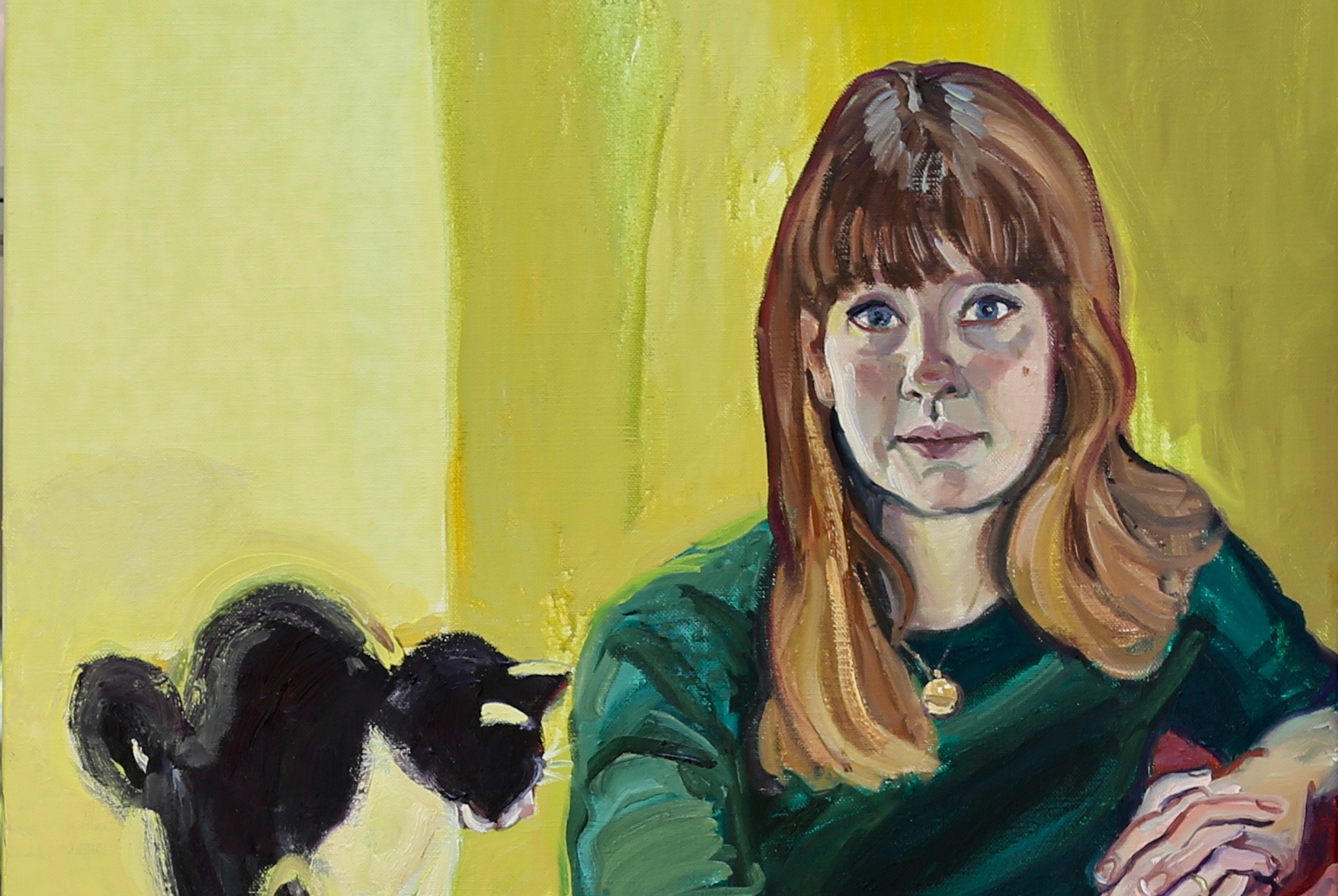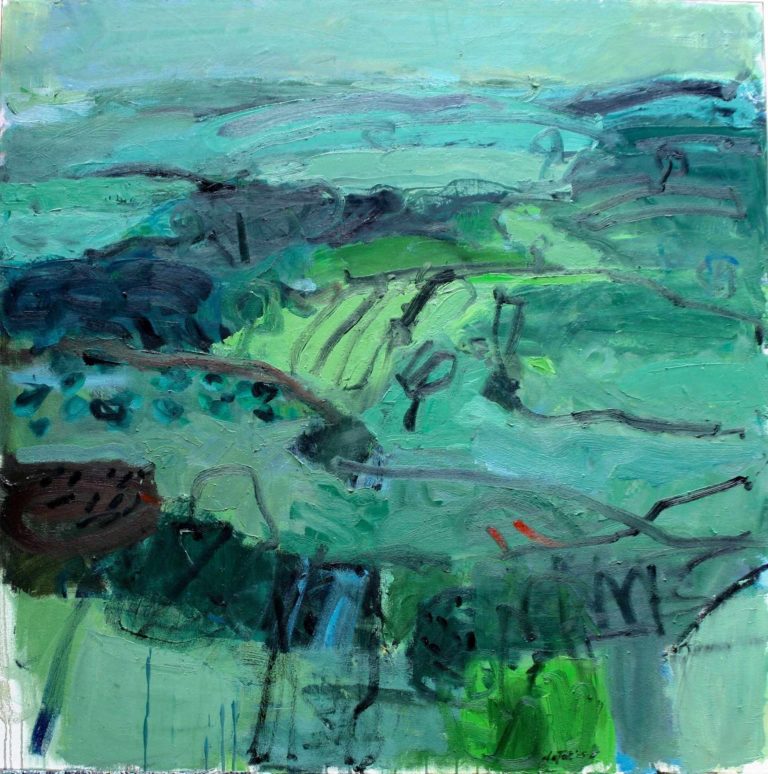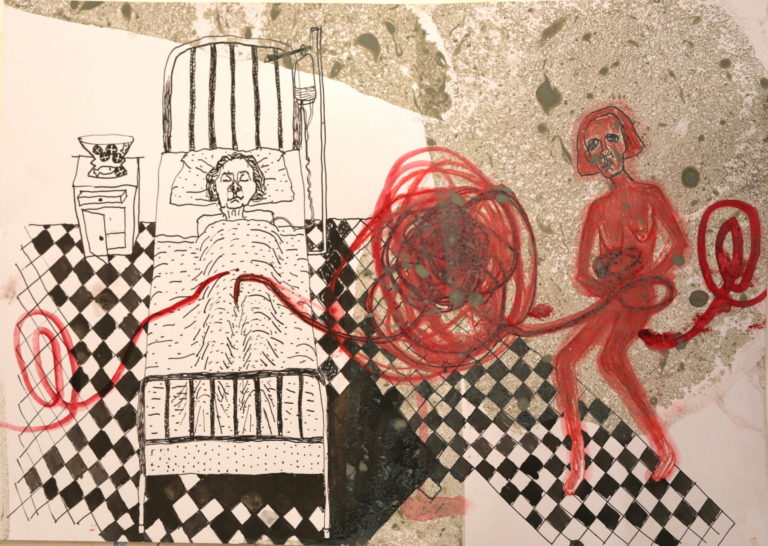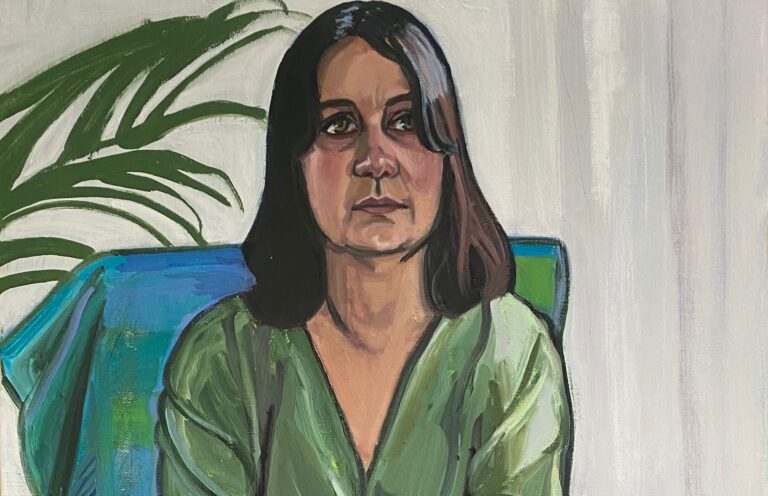It was not long into the project when I found myself asking if I was too old for this. I was en route to Lewisham to draw Laura Smith, a curator at Whitechapel Gallery who has written extensively on modern and contemporary art. But getting to Laura involved rail, overground, underground and a good deal of walking: an exhausting journey.

Such experiences bring me face-to-face with the realities of age, the tragedy that is the last third of life. I felt the young women I was meeting were moving forward swiftly, and I was not. I questioned the value of my work, the point of it all.
But this, at least, would not be the day I gave up. The last leg of my expedition took me across the lush expanse of Blythe Hill Fields, with its panoramic views of London. My spirits were lifted instantly. It’s moments like these that keep a project alive.
After my travels Laura’s Victorian terrace felt cool and restful. Though petite and softly spoken, Laura exuded a calm confidence. She invited me to the living room, where a daybed stood in front of a big window veiled with chartreuse curtains, the light behind them diffused and soft. Laura wore a viridian green linen dress which her mother had made for her. It reminded me of my own mother making my wedding dress, leaving it to the last minute as she always did. The bodice was lovingly hand-smocked, but I stood before the pulpit with the hem still unfinished. Mothers are special beings.
Laura sat on the daybed, the light seductively beautiful and perfect for good contrast and shapes. Claude, her shiny black cat, walked in and out of the picture until he fell asleep by her feet in the sun. As I drew her, Laura told me about her recent book on the British-Argentinian Surrealist Eileen Agar. She also had some excellent suggestions about promoting my portrait series; apparently her work as a curator makes her think about such things compulsively.
I started work on Laura’s portrait in August, painting the outlines of the drawing in acrylic viridian. The dress was a joy to paint, with the shadow and sunlight playing across its soft folds and subtle shades of green. I left the curtain mostly as an acrylic wash, to convey the impression of lightness as I remembered it.
Five months later Laura came for another sitting in my studio, bringing the exciting news that she is expecting her second child. It was late January, a cold but sunny day. Laura was understandably concerned about the strong smell of thinners in the studio, and we removed anything we thought could be toxic or harmful from the room. She was wearing a gold pendant I had not seen before, a gift from her husband marking the birth of their first child. I added it to the painting as a symbol of motherhood.
After several hours of painting, I thought I had overworked Laura’s face, making her appear older and clouding the freshness of her youthful appearance. When she left I knew the portrait could not be seen as finished.
I realised again that every painting poses different challenges. I do not have one way to resolve every problem: it takes time and patience to get a result I am happy with. One of the most difficult questions is when to put the painting aside for a while, and when to persevere. Often I am tempted to down brushes in the hope that some magic breakthrough will arrive in the next session, when in fact I should just plough on. Then again, sometimes I try to force a resolution when it would be better to step back and return with a fresh perspective.
Laura’s portrait came to bed with me that night, and I didn’t sleep well. In my effort to achieve that special combination of a likeness that is also a good painting, I think I lost something, pushing it over the hill into mediocrity. I got up early, walking to the studio while it was still getting light. There is something uncanny about this space in the early morning, when the silence blends uneasily with the noise and intensity of the previous day’s work that still seems to hang in the air.
The painting was stacked with the “maybe finished” group. I took a long critical look at it, and realised I could not improve it now, today, this week. Time was needed for new possibilities to reveal themselves. And eventually they did. Returning to the portrait, I removed the overworked passages and managed to soften the shapes in the face, until I felt that Laura’s youthfulness had returned. As is often the case with painting, success depended on removing the evidence of the struggle that had taken place.



